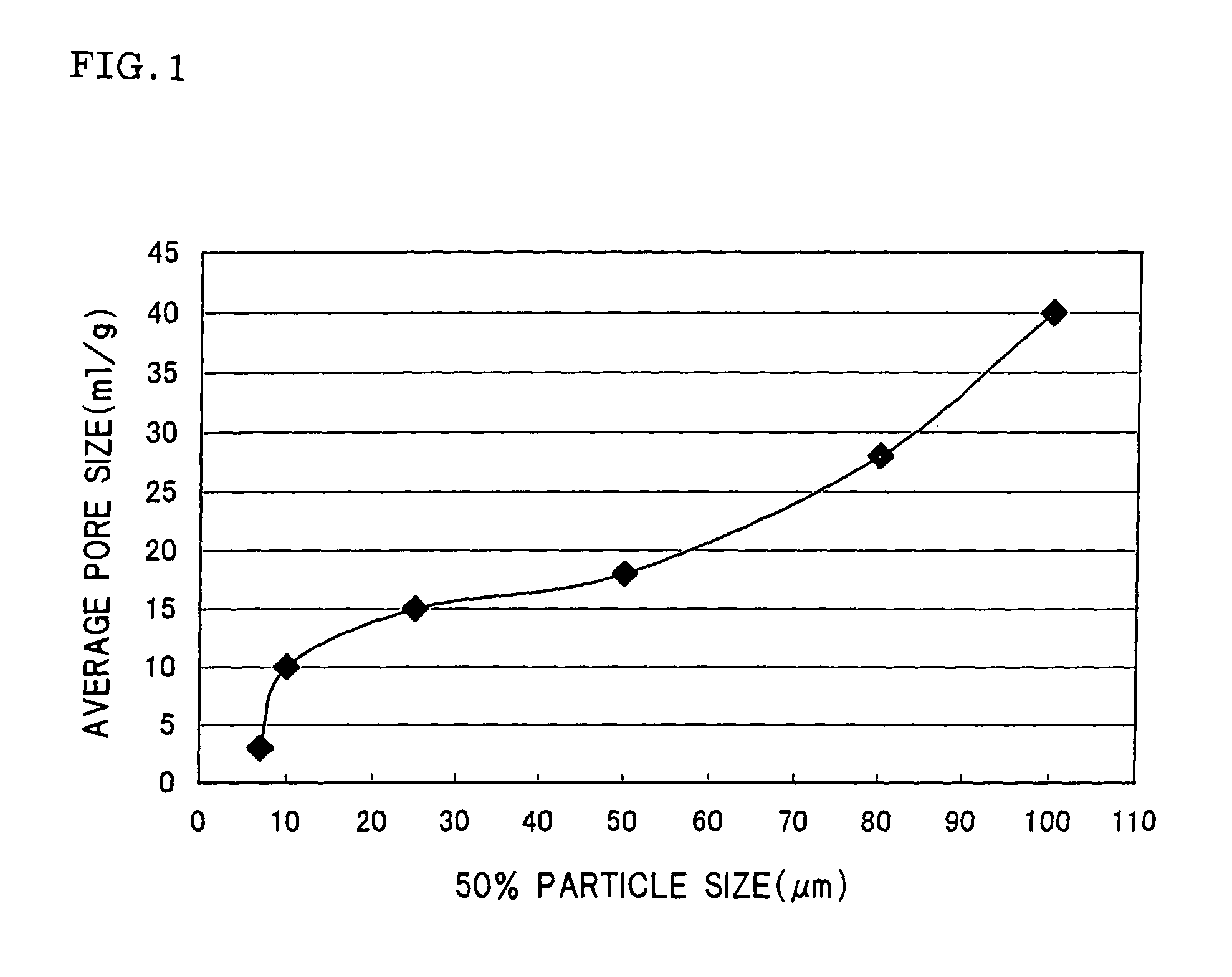Ceramic porous body and method for producing molded body
a porous body and ceramic technology, applied in the field of ceramic porous body, can solve the problems of increasing the firing time or producing carbon dioxide or toxic gas, reducing the pore-forming characteristics of resin foam, and reducing the firing time, so as to reduce the firing time and reduce the firing time. , the effect of not easily crushed during kneading
- Summary
- Abstract
- Description
- Claims
- Application Information
AI Technical Summary
Benefits of technology
Problems solved by technology
Method used
Image
Examples
examples
[0064]The present invention is described below in more detail by way of examples. Note that the present invention is not limited the following examples.
examples 19 to 21
[0078]Silica gel granules with different values for D50, D10 / D50, or D90 / D50 were provided. These silica gel granules were used as raw material granules. The raw material granules were sieved through a screen with a pore diameter of 145 μm. Cordierite porous bodies were obtained in the same manner as in Example 11 using the sieved silica gel granules as the pore-forming agent. The porosity and the average pore size of the resulting cordierite porous bodies were measured. The results are shown in Table 4. The raw material granules were sieved using an air jet classifier (“Fine Sifter MTS-D101” manufactured by Okawara Corporation) provided with a cylindrical screen with a pore diameter of 145 μm. The raw material granules were supplied to the internal space of the cylindrical screen, and sieved while absorbing the raw material granules from the outside of the cylindrical screen utilizing the force of the wind.
[0079]
TABLE 4Example 19Example 20Example 21Pore-forming agentD10(μm)2.72.87....
examples 22 to 26
[0081]Cordierite porous bodies were obtained in the same manner as in Example 11 using silica gel granules with different values for D10 / D50 or D90 / D50. The porosity and the average pore size of the cordierite porous bodies were measured. The results are shown in Table 5.
[0082]
TABLE 5Example 22Example 23Example 24Example 25Example 26Pore-forming agentD10(μm)1.52.55.87.512.5D502525242725D90140125756250D10 / D500.060.100.240.280.5D90 / D505.65.23.12.32Porous bodyPorosity(vol %)5248505352Average(μm)1017181925pore size
[0083]The cordierite porous bodies of Examples 23 to 26 in which the silica gel granules with a ratio D10 / D50 of 0.1 to 0.5 and a ratio D90 / D50 of 2 to 5 were used as the pore-forming agent had an average pore size of 10 μm or more which is required for a DPF.
[0084]The cordierite porous body of Example 22, in which the silica gel granules with a ratio D10 / D50 and a ratio D90 / D50 outside the above ranges were used as the pore-forming agent, had a significantly reduced average p...
PUM
| Property | Measurement | Unit |
|---|---|---|
| density | aaaaa | aaaaa |
| porosity | aaaaa | aaaaa |
| particle size | aaaaa | aaaaa |
Abstract
Description
Claims
Application Information
 Login to View More
Login to View More - R&D
- Intellectual Property
- Life Sciences
- Materials
- Tech Scout
- Unparalleled Data Quality
- Higher Quality Content
- 60% Fewer Hallucinations
Browse by: Latest US Patents, China's latest patents, Technical Efficacy Thesaurus, Application Domain, Technology Topic, Popular Technical Reports.
© 2025 PatSnap. All rights reserved.Legal|Privacy policy|Modern Slavery Act Transparency Statement|Sitemap|About US| Contact US: help@patsnap.com

